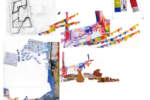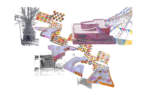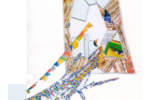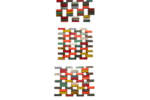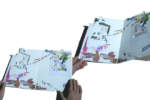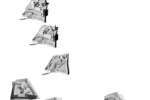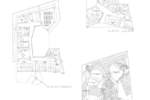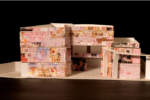architect: Benedetta Tagliabue embt (Miralles Tagliabue EMBT)
location: Kathmandu, Nepal
year: 2005
Urban Concept
…the school as a regenerating and transforming element for the surrounding community. The new building implemented in a dispersed medium, lacking of equipment, executes a transforming action, with an important rehabilitation effect. The starting point was a minimal budget and a parcel where the proposed building could barely fits. A river crossing just in front and large abandoned spaces with waste disposal accumulations, transform the area into a marginal zone. This zones have a highly expansive and educational potential for the school and its environment. The implementation of the building in this sector would help to achieve a regeneration of the environment, not only in the sense of the utilization of space, but also in the sense of an important civic educational exercise focused on the cleaning of the zone itself and a further utilization as agricultural ground: alternative cultivation, development of jobs, gardening, repair shops, outdoor sports… Therefore the project allows the definition and exponentiation of the “street”, the “square”, the “park”, the outdoor “market”. It has a recreational character, strengthening the spirit of community and the regeneration of the public space.
Proposal to the Community
A convincing investment is necessary to fulfil the regenerative element in all senses, not only with minimal services but also with the structure that would be able to use and transform all this energy. The organization of the work, the alternative cultivation, the increase of jobs, the harvest, the treatment and the storage of organic waste which can generate biomass, the reuse of trash as an alternative source of energy… Those elements are the argument of this intervention in the landscape and the public space. At the same time, it is important to take advantage of the available energy, and to use methods of generating electricity obtained from underground fermentation gases, which are converted in methane gas without smell and environmental degradation. This forms part of the public park that will be transformed this way in a sustainable space.
The Project
In first place, earthquake-proof foundations (with a continuous base that covers the whole extend of the parcel) were developed to ensure the maximum level of security. …the school project is based on the terms of recuperation, recycled and reused materials and trash. The structure permits a possible incorporation of materials: found, donated or those that would appear…
…flexibility, convertibility, adaptability… The facades are proposed as an open structure, a kind of anarchic strip, un-composed, that allows the implementation of recycled materials (bamboo, fabric, coloured bricks) as well as recuperated materials, like different wooden elements and parts used for openings. For this purpose a series of construction details was developed to incorporate materials and trash in the basic structure. This process is organized to optimize the bio-climatic behaviour of the building. …it is not about an aesthetic object but about a variety of possibilities…
The advantage of passive energy is optimized in terms of the building orientation, with solid materials to form a natural heat collecting wall, which regulates the interior temperature. The crossing ventilation guarantees in a natural way the building’s thermal regulation. The minimum energetic consume was based on a bio-climatic behaviour of high- energetic efficiency. Massive walls regulate the interior temperature, by taking advantage of the difference in temperature between day and night. The incorporation of weight (earth, sand, stones) forms the “sandwich” system in the interior of the wall. The two roof types enhance the bio-climatic character. On one side the green roof improves the thermal inertia and on the other side the ventilated cavity roof serves as a support for the thermal solar collectors. Rainwater is recuperated to be used for toilets and watering.



